A mineralizing pool of Gli1-expressing progenitors builds the tendon enthesis and demonstrates therapeutic potential
- PMID: 36459968
- PMCID: PMC10422080
- DOI: 10.1016/j.stem.2022.11.007
A mineralizing pool of Gli1-expressing progenitors builds the tendon enthesis and demonstrates therapeutic potential
Abstract
The enthesis, a fibrocartilaginous transition between tendon and bone, is necessary for force transfer from muscle to bone to produce joint motion. The enthesis is prone to injury due to mechanical demands, and it cannot regenerate. A better understanding of how the enthesis develops will lead to more effective therapies to prevent pathology and promote regeneration. Here, we used single-cell RNA sequencing to define the developmental transcriptome of the mouse entheses over postnatal stages. Six resident cell types, including enthesis progenitors and mineralizing chondrocytes, were identified along with their transcription factor regulons and temporal regulation. Following the prior discovery of the necessity of Gli1-lineage cells for mouse enthesis development and healing, we then examined their transcriptomes at single-cell resolution and demonstrated clonogenicity and multipotency of the Gli1-expressing progenitors. Transplantation of Gli1-lineage cells to mouse enthesis injuries improved healing, demonstrating their therapeutic potential for enthesis regeneration.
Keywords: Gli1; cell-based therapy; differentiation trajectory; enthesis development; enthesis injury; progenitor cells; scRNA-seq; tendon; transcription factors.
Copyright © 2022 Elsevier Inc. All rights reserved.
Conflict of interest statement
Declaration of interests The authors declare no competing interests.
Figures
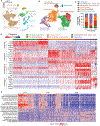
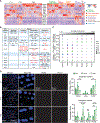
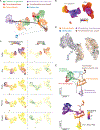

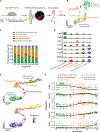

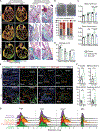
Comment in
-
Specialized cells for building tissue bridges.Cell Stem Cell. 2022 Dec 1;29(12):1615-1616. doi: 10.1016/j.stem.2022.11.009. Cell Stem Cell. 2022. PMID: 36459962
Similar articles
-
Enthesis regeneration: a role for Gli1+ progenitor cells.Development. 2017 Apr 1;144(7):1159-1164. doi: 10.1242/dev.139303. Epub 2017 Feb 20. Development. 2017. PMID: 28219952 Free PMC article.
-
Development of migrating tendon-bone attachments involves replacement of progenitor populations.Development. 2018 Dec 18;145(24):dev165381. doi: 10.1242/dev.165381. Development. 2018. PMID: 30504126 Free PMC article.
-
A role for TGFβ signaling in Gli1+ tendon and enthesis cells.FASEB J. 2024 Mar 31;38(6):e23568. doi: 10.1096/fj.202301452R. FASEB J. 2024. PMID: 38522021 Free PMC article.
-
Hedgehog signaling underlying tendon and enthesis development and pathology.Matrix Biol. 2022 Jan;105:87-103. doi: 10.1016/j.matbio.2021.12.001. Epub 2021 Dec 24. Matrix Biol. 2022. PMID: 34954379 Free PMC article. Review.
-
Negative impact of disuse and unloading on tendon enthesis structure and function.Life Sci Space Res (Amst). 2021 May;29:46-52. doi: 10.1016/j.lssr.2021.03.001. Epub 2021 Mar 17. Life Sci Space Res (Amst). 2021. PMID: 33888287 Review.
Cited by
-
Single-cell RNA sequencing reveals cellular and molecular heterogeneity in fibrocartilaginous enthesis formation.Elife. 2023 Sep 12;12:e85873. doi: 10.7554/eLife.85873. Elife. 2023. PMID: 37698466 Free PMC article.
-
Bi-lineage inducible and immunoregulatory electrospun fibers scaffolds for synchronous regeneration of tendon-to-bone interface.Mater Today Bio. 2023 Jul 26;22:100749. doi: 10.1016/j.mtbio.2023.100749. eCollection 2023 Oct. Mater Today Bio. 2023. PMID: 37545569 Free PMC article.
-
A New Tissue Engineering Strategy to Promote Tendon-bone Healing: Regulation of Osteogenic and Chondrogenic Differentiation of Tendon-derived Stem Cells.Orthop Surg. 2024 Oct;16(10):2311-2325. doi: 10.1111/os.14152. Epub 2024 Jul 23. Orthop Surg. 2024. PMID: 39043618 Free PMC article. Review.
-
Hedgehog signaling directs cell differentiation and plays a critical role in tendon enthesis healing.NPJ Regen Med. 2025 Jan 20;10(1):3. doi: 10.1038/s41536-025-00392-4. NPJ Regen Med. 2025. PMID: 39833191 Free PMC article.
-
Sirtuin 6 Overexpression Improves Rotator Cuff Tendon-to-Bone Healing in the Aged.Cells. 2023 Aug 10;12(16):2035. doi: 10.3390/cells12162035. Cells. 2023. PMID: 37626845 Free PMC article.
References
Publication types
MeSH terms
Substances
Grants and funding
LinkOut - more resources
Full Text Sources
Molecular Biology Databases

